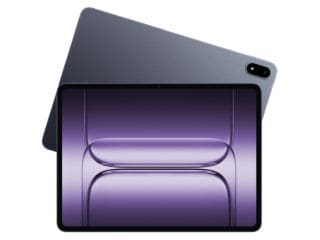- Home
- Science
- Science News
- First Ever 'Synthetic Embryo' Developed Entirely Using Stem Cells From Mice
First-Ever 'Synthetic Embryo' Developed Entirely Using Stem Cells From Mice
The researchers will attempt to study how stem cells self-assemble into organs and function inside an embryo.

Photo Credit: Weizmann Institute of Science
In the latest study, the researchers grew the embryo entirely using stem cells from mice
Scientists have grown a synthetic mouse embryo just by using stem cells. They did not rely on fertilised eggs which are considered a prerequisite for the development of an embryo. Researchers, from the Weizmann Institute of Science, have utilised previous advancements made in their lab. These included an efficient method to reprogram stem cells back into the naive state and the other being an electronically controlled device built for growing natural mouse embryos outside the womb. The previous research had allowed them to successfully fabricate a natural mouse embryo, but, in the new research, they focussed on developing its synthetic version.
They cultured mouse stem cells in a petri dish for years and proceeded to grow synthetic embryos without using sperms or eggs. With this, they were able to bypass the issues associated with the use of natural embryos in biotechnology and research.
The team first separated the stem cells into three groups before placing them in the device. While one group of stem cells were left undisturbed, the other two were pretreated for 48 hours to overexpress one of the two types of genes, the master regulators of the placenta or the yolk sac. “We gave these two groups of cells a transient push to give rise to extraembryonic tissues that sustain the developing embryo,” explained Professor Jacob Hanna of Weizmann's Molecular Genetics Department. He is the lead author of the study published in Cell.
After mixing the groups together, many of them could not develop, but some managed to form spheres and later evolve into an embryo-like structure. Researchers observed the placenta and the yolk sacs forming outside the embryo and the model developing like a natural embryo.
These synthetic embryos grew normally until day 8.5 when the early organ progenitors are formed such as heartbeat, blood stem cell circulation, a neural tube, and intestinal tract.
The team is now aiming to study how stem cells self-assemble into organs and function inside an embryo. They also hope that the newly discovered model might serve as a source for cells, organs, and tissues for transplantation.
For the latest tech news and reviews, follow Gadgets 360 on X, Facebook, WhatsApp, Threads and Google News. For the latest videos on gadgets and tech, subscribe to our YouTube channel. If you want to know everything about top influencers, follow our in-house Who'sThat360 on Instagram and YouTube.
Related Stories
- Samsung Galaxy Unpacked 2025
- ChatGPT
- Redmi Note 14 Pro+
- iPhone 16
- Apple Vision Pro
- Oneplus 12
- OnePlus Nord CE 3 Lite 5G
- iPhone 13
- Xiaomi 14 Pro
- Oppo Find N3
- Tecno Spark Go (2023)
- Realme V30
- Best Phones Under 25000
- Samsung Galaxy S24 Series
- Cryptocurrency
- iQoo 12
- Samsung Galaxy S24 Ultra
- Giottus
- Samsung Galaxy Z Flip 5
- Apple 'Scary Fast'
- Housefull 5
- GoPro Hero 12 Black Review
- Invincible Season 2
- JioGlass
- HD Ready TV
- Laptop Under 50000
- Smartwatch Under 10000
- Latest Mobile Phones
- Compare Phones
- Vivo Y300 GT
- Samsung Galaxy F56 5G
- Realme C75 5G
- Lava Yuva Star 2
- Vivo Y19 5G
- iQOO Z10 Turbo Pro
- iQOO Z10 Turbo
- CMF by Nothing Phone 2 Pro
- Alienware 16X Aurora
- Alienware 16 Aurora
- Amazon Kindle Paperwhite (12th Gen)
- Lenovo Legion Y700 4th Gen
- boAt Storm Infinity Plus
- Moto Watch Fit
- Xiaomi QLED TV FX Pro (55-inch)
- Xiaomi QLED TV FX Pro
- Asus ROG Ally
- Nintendo Switch Lite
- Toshiba 1.8 Ton 5 Star Inverter Split AC (RAS-24TKCV5G-INZ / RAS-24TACV5G-INZ)
- Toshiba 1.5 Ton 5 Star Inverter Split AC (RAS-18PKCV2G-IN / RAS-18PACV2G-IN)














